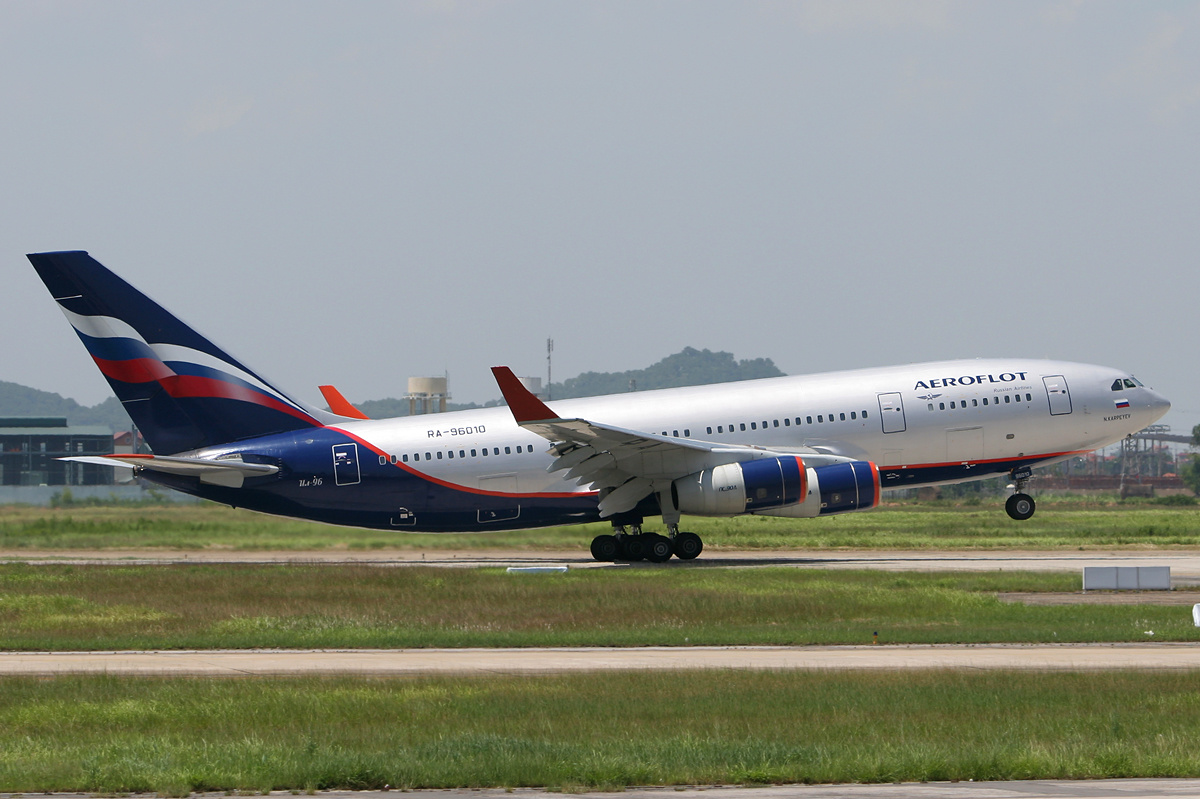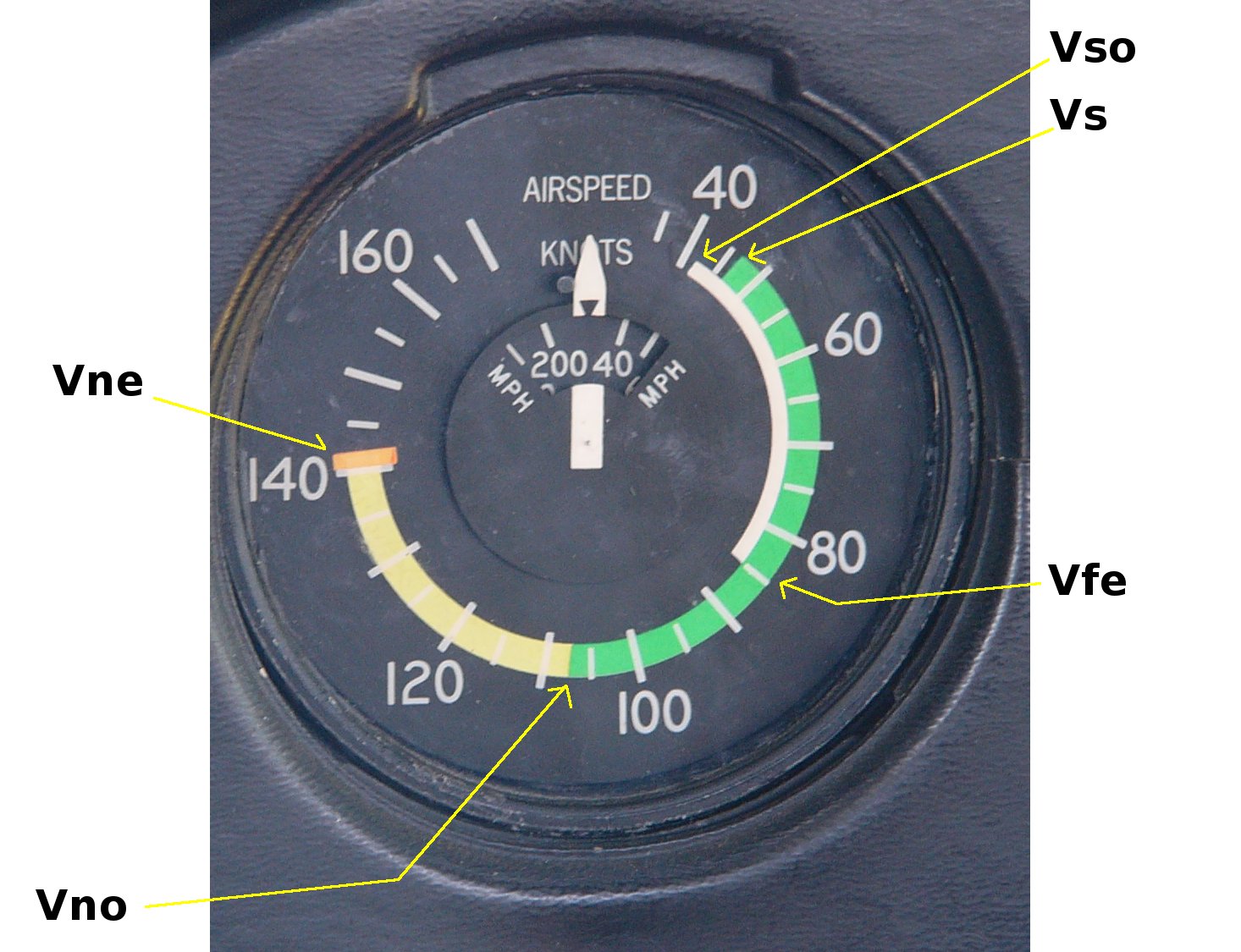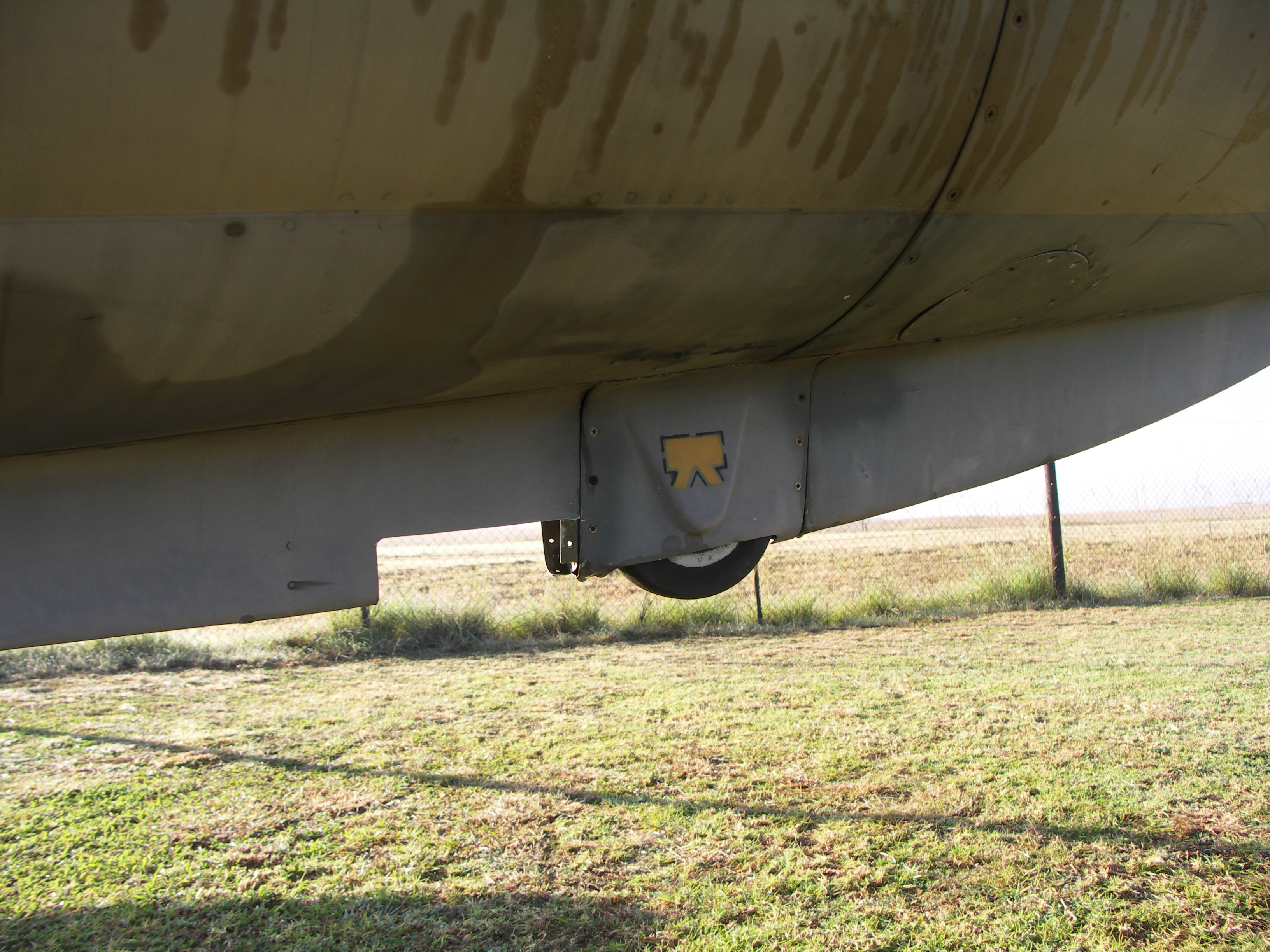|
Rotation (aviation)
In aviation, rotation refers to the action of applying back pressure to a control device, such as a yoke, side-stick or centre stick, to lift the nose wheel off the ground during takeoff. The aircraft rotates around its lateral axis. Rotation is begun at the speed known as VR. Rotation at the correct speed and to the correct angle is important for safety reasons and to decrease takeoff distance. After rotation, the aircraft continues to accelerate until it reaches its liftoff speed VLO, at which point it leaves the runway. Over-rotation can cause a tailstrike, which can damage the underside of the tail unless prevented by a protection device such as a tailskid or tail bumper. A certification test is required to show that a new aircraft design will still take off safely with the tail dragging on the runway. Using a higher VR will increase tail clearance and reduce the probability of tailstrike. Description Rotation applies to tricycle gear aircraft rather than those with convent ... [...More Info...] [...Related Items...] OR: [Wikipedia] [Google] [Baidu] |
Aeroflot Il-96-300 RA-96010 HAN 2007-6-22
PJSC AeroflotRussian Airlines (russian: ПАО "Аэрофло́т — Росси́йские авиали́нии", ), commonly known as Aeroflot ( or ; russian: Аэрофлот, , ), is the flag carrier and the largest airline of Russia. The airline was founded in 1923, making Aeroflot one of the oldest active airlines in the world. Aeroflot is headquartered in the Central Administrative Okrug, Moscow, with its hub being Sheremetyevo International Airport. Before the 2022 Russian invasion of Ukraine, the airline flew to 146 destinations in 52 countries, excluding codeshared services. The number of destinations was significantly reduced after many countries banned Russian aircraft; as of 8 March 2022, Aeroflot flies only to destinations in Russia and Belarus. From its inception to the early 1990s, Aeroflot was the flag carrier and a state-owned enterprise of the Soviet Union (USSR). During this time, Aeroflot grew its fleet to over five thousand domestically made aircraft a ... [...More Info...] [...Related Items...] OR: [Wikipedia] [Google] [Baidu] |
Yoke (aircraft)
A yoke, alternatively known as a control wheel or a control column, is a device used for piloting some fixed-wing aircraft.Crane, Dale: ''Dictionary of Aeronautical Terms, third edition'', page 563. Aviation Supplies & Academics, 1997. . The pilot uses the yoke to control the attitude of the plane, usually in both pitch and roll. Rotating the control wheel controls the ailerons and the roll axis. Fore and aft movement of the control column controls the elevator and the pitch axis. When the yoke is pulled back, the nose of the aircraft rises. When the yoke is pushed forward, the nose is lowered. When the yoke is turned left, the plane rolls to the left, and when it is turned to the right, the plane rolls to the right. Small to medium-size aircraft, usually limited to propeller-driven, feature a mechanical system whereby the yoke is connected directly to the control surfaces with cables and rods. Human muscle power alone is not enough for larger and more powerful aircraft, ... [...More Info...] [...Related Items...] OR: [Wikipedia] [Google] [Baidu] |
Side-stick
__NOTOC__ A side-stick or sidestick controller is an aircraft control stick that is located on the side console of the pilot, usually on the righthand side, or outboard on a two-seat flightdeck. Typically this is found in aircraft that are equipped with fly-by-wire control systems.Crane, Dale: ''Dictionary of Aeronautical Terms, third edition'', page 463. Aviation Supplies & Academics, 1997. The throttle controls are typically located to the left of a single pilot or centrally on a two-seat flightdeck. Only one hand is required to operate it; two hand operation is neither possible nor necessary. The side-stick is used in many modern military fighter aircraft, such as the F-16 Fighting Falcon, Mitsubishi F-2, Dassault Rafale, and F-22 Raptor, and also on civil aircraft, such as the Sukhoi Superjet 100, Airbus A320 and all subsequent Airbus aircraft, including the largest passenger jet in service, the Airbus A380. It is also used in new helicopter models such as the Bell 525 Rel ... [...More Info...] [...Related Items...] OR: [Wikipedia] [Google] [Baidu] |
Centre Stick
A centre stick (or center stick in the United States), or simply control stick is an aircraft cockpit arrangement where the control column (or joystick) is located in the center of the cockpit between the pilots or between the pilot's legs. Since the throttle controls are typically located to the left of the pilot, the right hand is used for the stick, although left-hand or both-hands operation is possible if required.Crane, Dale: ''Dictionary of Aeronautical Terms, third edition'', page 132. Aviation Supplies & Academics, 1997. . The centre stick is a part of an aircraft's flight control system and is typically linked to its ailerons and elevators, or alternatively to its elevons, by control rods or control cables on basic aircraft. On heavier, faster, more advanced aircraft the centre stick may also control power-assist modules. Modern aircraft centre sticks are also usually equipped with a number of electrical control switches within easy finger reach, in order to reduce the pi ... [...More Info...] [...Related Items...] OR: [Wikipedia] [Google] [Baidu] |
Takeoff
Takeoff is the phase of flight in which an aerospace vehicle leaves the ground and becomes airborne. For aircraft traveling vertically, this is known as liftoff. For aircraft that take off horizontally, this usually involves starting with a transition from moving along the ground on a runway. For balloons, helicopters and some specialized fixed-wing aircraft (VTOL aircraft such as the Harrier and the Bell Boeing V22 Osprey), no runway is needed. Horizontal Power settings For light aircraft, usually full power is used during takeoff. Large transport category (airliner) aircraft may use a reduced power for takeoff, where less than full power is applied in order to prolong engine life, reduce maintenance costs and reduce noise emissions. In some emergency cases, the power used can then be increased to increase the aircraft's performance. Before takeoff, the engines, particularly piston engines, are routinely run up at high power to check for engine-related problems. The airc ... [...More Info...] [...Related Items...] OR: [Wikipedia] [Google] [Baidu] |
Aircraft Principal Axes
An aircraft in flight is free to rotate in three dimensions: '' yaw'', nose left or right about an axis running up and down; ''pitch'', nose up or down about an axis running from wing to wing; and ''roll'', rotation about an axis running from nose to tail. The axes are alternatively designated as ''vertical'', ''lateral'' (or ''transverse''), and ''longitudinal'' respectively. These axes move with the vehicle and rotate relative to the Earth along with the craft. These definitions were analogously applied to spacecraft when the first manned spacecraft were designed in the late 1950s. These rotations are produced by torques (or moments) about the principal axes. On an aircraft, these are intentionally produced by means of moving control surfaces, which vary the distribution of the net aerodynamic force about the vehicle's center of gravity. Elevators (moving flaps on the horizontal tail) produce pitch, a rudder on the vertical tail produces yaw, and ailerons (flaps on the win ... [...More Info...] [...Related Items...] OR: [Wikipedia] [Google] [Baidu] |
V Speeds
In aviation, V-speeds are standard terms used to define airspeeds important or useful to the operation of all aircraft. These speeds are derived from data obtained by aircraft designers and manufacturers during flight testing for aircraft type-certification. Using them is considered a best practice to maximize aviation safety, aircraft performance, or both. The actual speeds represented by these designators are specific to a particular model of aircraft. They are expressed by the aircraft's indicated airspeed (and not by, for example, the ground speed), so that pilots may use them directly, without having to apply correction factors, as aircraft instruments also show indicated airspeed. In general aviation aircraft, the most commonly used and most safety-critical airspeeds are displayed as color-coded arcs and lines located on the face of an aircraft's airspeed indicator. The lower ends of the white arc and the green arc are the stalling speed with wing flaps in landing conf ... [...More Info...] [...Related Items...] OR: [Wikipedia] [Google] [Baidu] |
Runway
According to the International Civil Aviation Organization (ICAO), a runway is a "defined rectangular area on a land aerodrome prepared for the landing and takeoff of aircraft". Runways may be a man-made surface (often asphalt concrete, asphalt, concrete, or a mixture of both) or a natural surface (sod, grass, soil, dirt, gravel, ice, sand or road salt, salt). Runways, as well as taxiways and Airport apron, ramps, are sometimes referred to as "tarmac", though very few runways are built using Tarmacadam, tarmac. Takeoff and landing areas defined on the surface of water for seaplanes are generally referred to as waterways. Runway lengths are now International Civil Aviation Organization#Use of the International System of Units, commonly given in meters worldwide, except in North America where feet are commonly used. History In 1916, in a World War I war effort context, the first concrete-paved runway was built in Clermont-Ferrand in France, allowing local company Michelin to ... [...More Info...] [...Related Items...] OR: [Wikipedia] [Google] [Baidu] |
Tailstrike
In aviation, a tailstrike or tail strike occurs when the tail or empennage of an aircraft strikes the ground or other stationary object. This can happen with a fixed-wing aircraft with tricycle undercarriage, in both takeoff where the pilot rotates the nose up too rapidly, or in landing where the pilot raises the nose too sharply during final approach, often in attempting to land too near the runway threshold. It can also happen during helicopter operations close to the ground, when the tail inadvertently strikes an obstacle. A minor tailstrike incident may not be dangerous in itself, but the aircraft may still be weakened and must be thoroughly inspected and repaired if a more disastrous accident is to be avoided later in its operating life. Protection measures Fixed-wing aircraft with a conventional tail and tricycle undercarriage are vulnerable to tailstrike. Those which require a high angle of attack on takeoff or landing are especially so. They may be fitted with a protect ... [...More Info...] [...Related Items...] OR: [Wikipedia] [Google] [Baidu] |
Tricycle Gear
Tricycle gear is a type of aircraft undercarriage, or ''landing gear'', arranged in a tricycle fashion. The tricycle arrangement has a single nose wheel in the front, and two or more main wheels slightly aft of the center of gravity. Tricycle gear aircraft are the easiest for takeoff, landing and taxiing, and consequently the configuration is the most widely used on aircraft.Crane, Dale: ''Dictionary of Aeronautical Terms, third edition'', page 524. Aviation Supplies & Academics, 1997. Aviation Publishers Co. Limited, ''From the Ground Up'', page 11 (27th revised edition) History Several early aircraft had primitive tricycle gear, notably very early Antoinette planes and the Curtiss Pushers of the pre-World War I Pioneer Era of aviation. Waldo Waterman's 1929 tailless '' Whatsit'' was one of the first to have a steerable nose wheel. In 1956, Cessna introduced sprung-steel tricycle landing gear on the Cessna 172. Their marketing department described this as "Land-O-Matic" t ... [...More Info...] [...Related Items...] OR: [Wikipedia] [Google] [Baidu] |
Conventional Gear
Conventional landing gear, or tailwheel-type landing gear, is an aircraft undercarriage consisting of two main wheels forward of the center of gravity and a small wheel or skid to support the tail.Crane, Dale: ''Dictionary of Aeronautical Terms, third edition'', page 133. Aviation Supplies & Academics, 1997. From the Ground Up, 27th edition, page 11 The term taildragger is also used, although some argue it should apply only to those aircraft with a tailskid rather than a wheel. The term "conventional" persists for historical reasons, but all modern jet aircraft and most modern propeller aircraft use tricycle gear. History In early aircraft, a tailskid made of metal or wood was used to support the tail on the ground. In most modern aircraft with conventional landing gear, a small articulated wheel assembly is attached to the rearmost part of the airframe in place of the skid. This wheel may be steered by the pilot through a connection to the rudder pedals, allowing the rudder ... [...More Info...] [...Related Items...] OR: [Wikipedia] [Google] [Baidu] |
Angle Of Attack
In fluid dynamics, angle of attack (AOA, α, or \alpha) is the angle between a reference line on a body (often the chord line of an airfoil) and the vector representing the relative motion between the body and the fluid through which it is moving. Angle of attack is the angle between the body's reference line and the oncoming flow. This article focuses on the most common application, the angle of attack of a wing or airfoil moving through air. In aerodynamics, angle of attack specifies the angle between the chord line of the wing of a fixed-wing aircraft and the vector representing the relative motion between the aircraft and the atmosphere. Since a wing can have twist, a chord line of the whole wing may not be definable, so an alternate reference line is simply defined. Often, the chord line of the root of the wing is chosen as the reference line. Another choice is to use a horizontal line on the fuselage as the reference line (and also as the longitudinal axis). Some aut ... [...More Info...] [...Related Items...] OR: [Wikipedia] [Google] [Baidu] |











